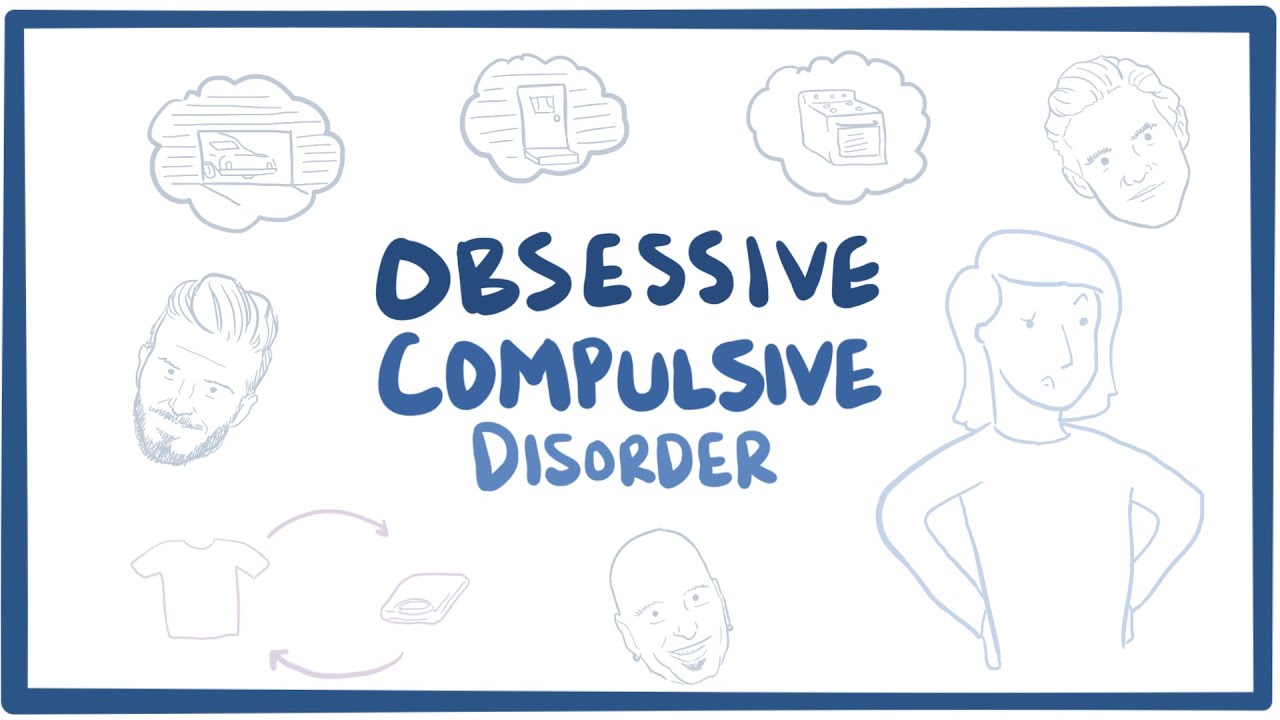Understanding Obsessive-Compulsive Disorder
Welcome to the topic Understanding Obsessive-Compulsive Disorder.
There is a disorder called obsessive-compulsive disorder (OCD). Individuals have repeating, unwelcome thoughts, ideas, or feelings that cause them to feel compelled to do a certain behavior again (compulsions). A person’s everyday tasks and social interactions might be greatly disrupted by repeated habits, such as hand washing, checking on objects, or cleaning.
Even those who don’t suffer from OCD are not immune to having intrusive thoughts or actions. However, these thoughts and actions don’t usually interfere with daily living. OCD is characterized by recurrent, intrusive thoughts and inflexible, ritualized activities. It is usual for people to suffer greatly if they do not do so. Many persons with OCD know or assume that their obsessions are irrational, while others may believe they are (known as limited insight). People with OCD have
a very difficult time letting go of their compulsions, even if they know that their obsessions are irrational.
OCD: A Guide to Understanding the Compulsions
Obsessions are persistent, unwelcome, and difficult-to-stop thoughts. Thoughts like this induce anguish, worry and are generally centered on one or more distinct topics.
OCD sufferers, for example, maybe plagued by intrusive thoughts about germs and illnesses, making them fearful of getting sick.
Turbulent and distressing feelings arise as a result of these thoughts and compulsions. Anxiety, uncertainty, and other unpleasant sensations persist even though OCD sufferers recognize irrational notions.
Having an obsessive-compulsive disorder (OCD) is time-consuming and interferes with one’s everyday routine.

Obsessions can manifest in a variety of ways for those with OCD.
Contamination
In certain cases, people are afraid of body fluids, viruses or illnesses (like HIV), the environment (such as asbestos or radiation), or home chemicals (like bleach).
Losing your grip on situations
Some are afraid of injuring themselves or others, speaking vulgar remarks, or offending others.
Harm
Some people are afraid that they will be held accountable for something bad, like a fire, or injure someone else because they aren’t careful enough, such as leaving an object on the ground.
Perfectionism-related compulsions
The urge to recall or know particular things, as well as the dread of losing them, are all examples of perfectionism. Rather than a desire for perfection, these inclinations are often a response to worry or suffering caused by ambiguity or a certain feared consequence.
Anxiety over Having a Relationship
Certain persons are plagued by intrusive sexual fantasies or visions, impulsive acts of rape or incest, obsessive thoughts about their sexual orientation, or any number of other strange and unnatural sexual obsessions.
Anxieties Caused by Faith
Obsessions based on the fear of offending God, blasphemy, or a focus on morality are common in these cases. In this sub-category, one’s faith or moral compass may be of interest.
Obsessions other than these
There are also fears about physical illnesses and diseases such as cancer and Alzheimer’s and a variety of other superstitious beliefs.
Logic and Imagination
Unlike some of the more reasonable obsessive ideas that drive behavior, the “magical thinking” noted by Volz and Heyman in their 2007 paper is a motivator to complete or repeat a given activity that has no explanation or proof supporting the link between the thought and the action.
As a starting point, let’s look at a familiar one. Obsessive hand washing is caused by a fear of germs or contamination, both of which can be harmful to the person who engages in it. As a result, despite the intensity of the idea, there is some valid reasoning going on. On the other hand, the compulsions that result from “magical thinking” have no valid link. Many individual’s hands are so chaffed and bleeding from constant hand washing that it becomes the only thing they can do to calm their anxiousness. Despite the negative effects, obsessive behavior persists.
People who believe that if they don’t open and close their automobile door a certain amount, the vehicle would crash are another example of magical thinking. Many individuals who encounter this form of thinking are aware that it is unreasonable, but they would prefer not to discover whether the relationship is true.
What are the root causes of OCD?
Experts are baffled as to why certain individuals get OCD. They’ve come up with a few theories, among them:
Inheritance
Having a family member with OCD elevates your chances of developing the disorder. There is a higher likelihood that OCD-related tics will run in families as well. Several experts feel that some genes may have a role in developing OCD; however, no particular genes have been identified. It’s also worth noting that not everyone with OCD has a family member who also has the disorder.
Imbalance of chemicals
The chemistry of the brain may also be a factor. OCD may be exacerbated by difficulties with the transmission of brain chemicals, such as serotonin and norepinephrine, in particular areas of the brain.
Factors in the environment
OCD and other mental health issues may also be caused by trauma, abuse, or other stressful situations.
PANDAS, an acronym for pediatric autoimmune neuropsychiatric diseases associated with streptococcal infections, has also been related to OCD.
When a strep infection causes a quick onset or worsening of OCD symptoms in a kid, they are diagnosed with OCD disorder.
Few studies have found a link between OCD and certain environmental variables. However, a 2015 study trusted Source looked at 124 young people with OCD suggests that tic-related OCD appears to be a common ancestor of the disorder.
Treatment
For those with OCD, therapy may not result in a cure, but it may be able to alleviate symptoms such that they don’t take over your daily routine. Some persons with OCD require long-term, continuous, or more rigorous therapy, depending on the severity of their condition.
In addition to psychotherapy and medication, the most common treatments for OCD involve both. In many cases, a mix of these approaches yields the best results.
Psychotherapy
Many patients with OCD benefit from cognitive behavioral therapy (CBT), a beneficial form of psychotherapy. A part of cognitive-behavioral treatment (CBT) is called exposure and response prevention (ERP), which teaches you to resist the temptation to do your obsessive rituals by gradually exposing you to a feared item or obsession. When you learn to control your compulsions and obsessions, you may have a higher quality of life.
Medications
OCD can be managed with the use of drugs prescribed by a doctor. In the vast majority of cases, people begin on antidepressants.
A list of FDA-approved antidepressants for the treatment of OCD includes:
- Children ages ten and older can take Clomipramine (Anafranil).
- People of all ages at least seven years old should take Fluoxetine (Prozac).
- Patients above the age of eight can take fluvoxamine.
- Paxil (Pexeva) is only for adults.
- Six-year-olds and adults can take Sertraline (Zoloft).
Other antidepressants and psychiatric drugs, on the other hand, may be prescribed by your doctor.
Other methods of therapy are also available.
OCD symptoms can be difficult to treat, even with the help of psychotherapy and medication. Other methods may be suggested if a patient is not responding to treatment:
Intensive outpatient and residential treatment programs.
People with OCD who find it difficult to function due to the intensity of their symptoms may benefit from comprehensive treatment programs that incorporate ERP therapy concepts. Typically, these sessions endure a few weeks.
TMS (Transcranial magnetic stimulation)
Magnetic stimulation of the brain by intracranial infusion (TMS). Traditional treatment options for OCD in individuals aged 22 to 68 have not been successful; thus, the FDA authorized a specialized device (BrainsWay Deep Transcranial Magnetic Stimulation). To alleviate the symptoms of OCD, a noninvasive therapy known as TMS is used. You will have an electromagnetic coil put on your scalp close to your forehead during a TMS session for you to experience the treatment. The electromagnet produces a magnetic pulse to activate your brain’s nerve cells.
DBS(Deep brain stimulation)
Stimulation of the deep brain (DBS). To treat OCD in individuals aged 18 and older, the FDA has approved the use of deep brain stimulation (DBS). In DBS, electrodes are implanted in specific parts of the brain. Using these electrodes, aberrant impulses may be regulated by electrical impulses.
Have any questions regarding the topic Understanding Obsessive-Compulsive Disorder? Feel Free to comment below.
Also Read: Valium Addiction And Abuse

